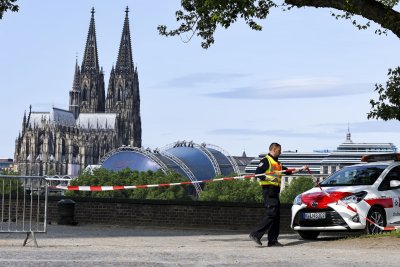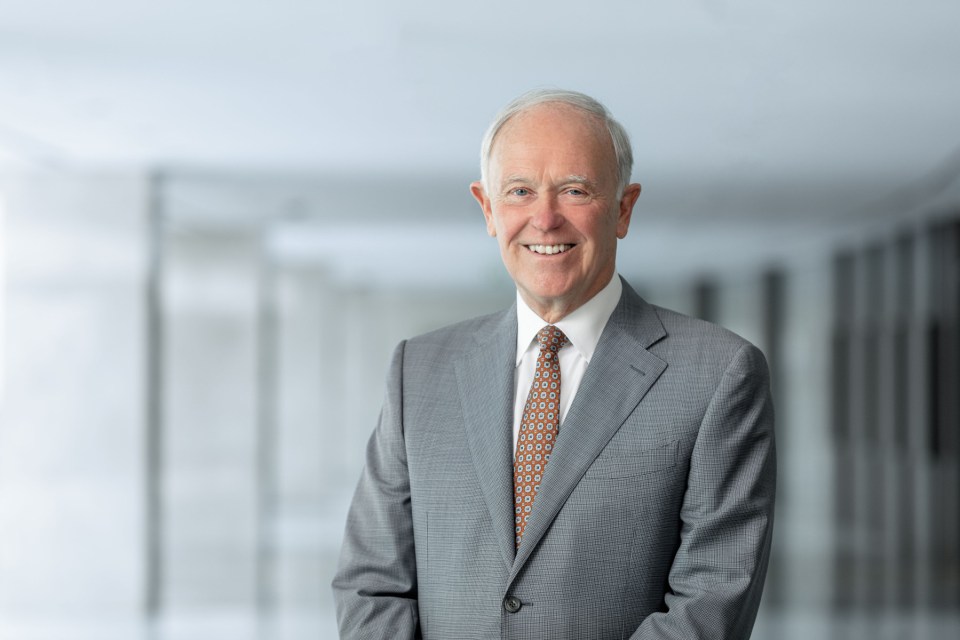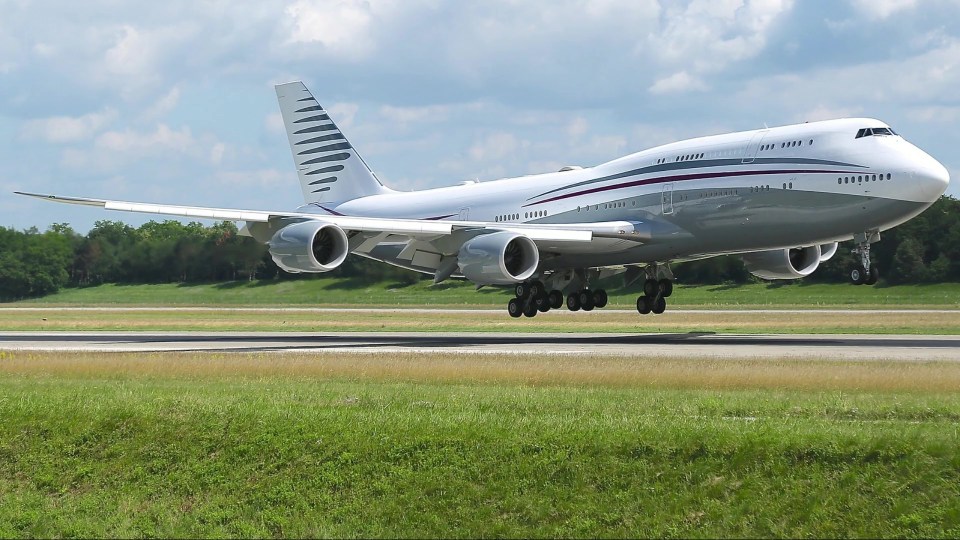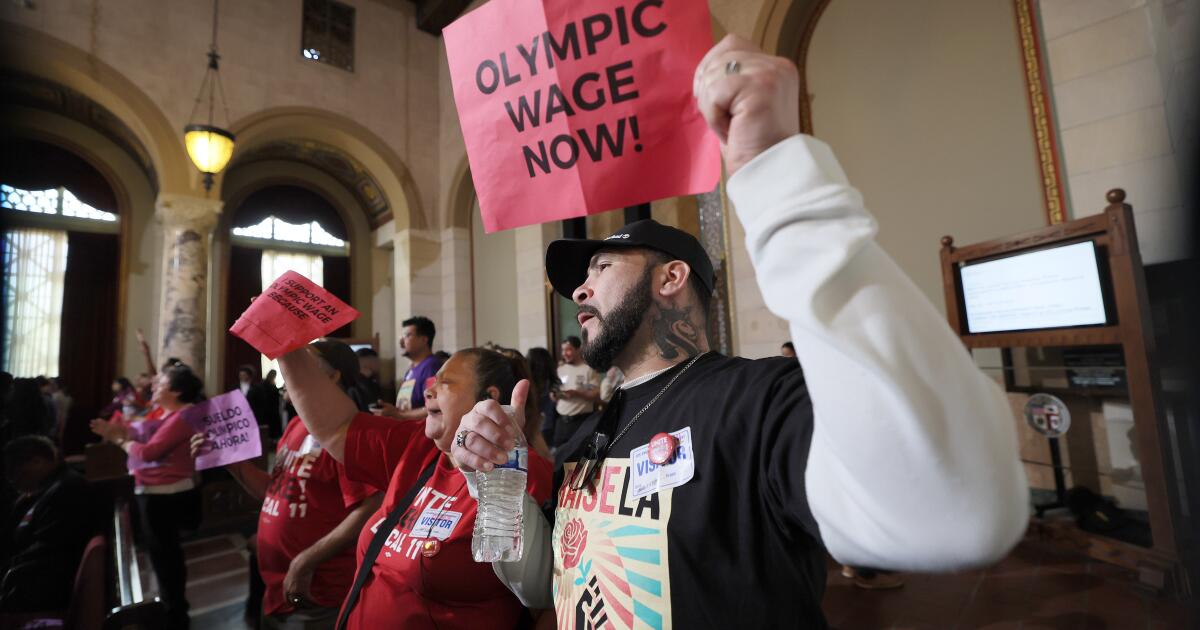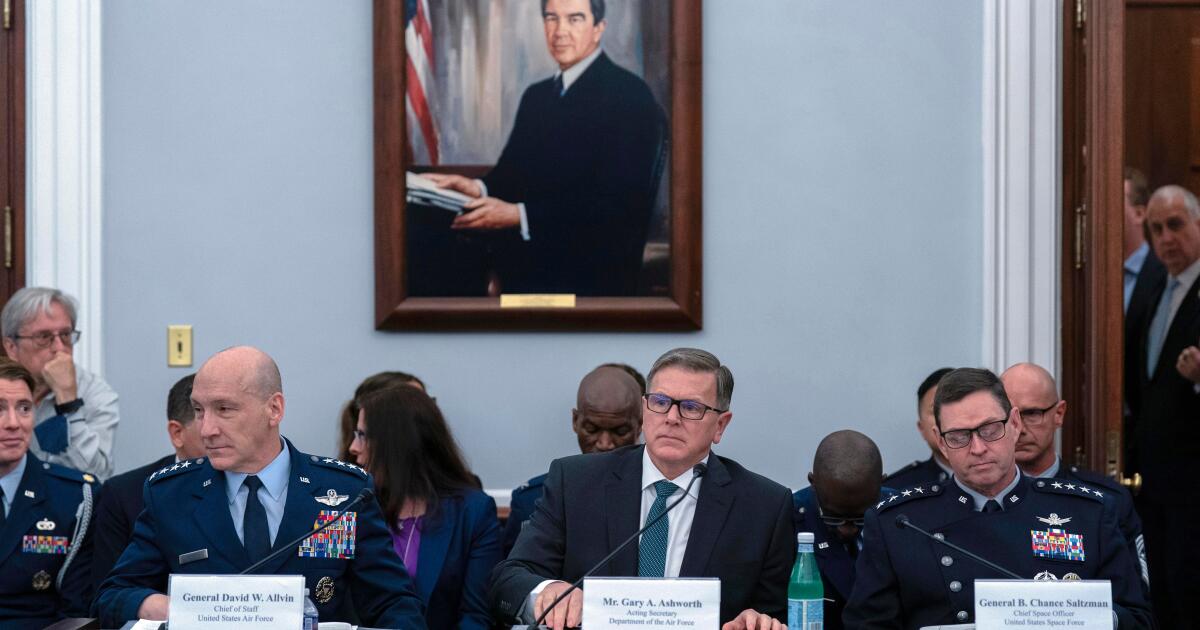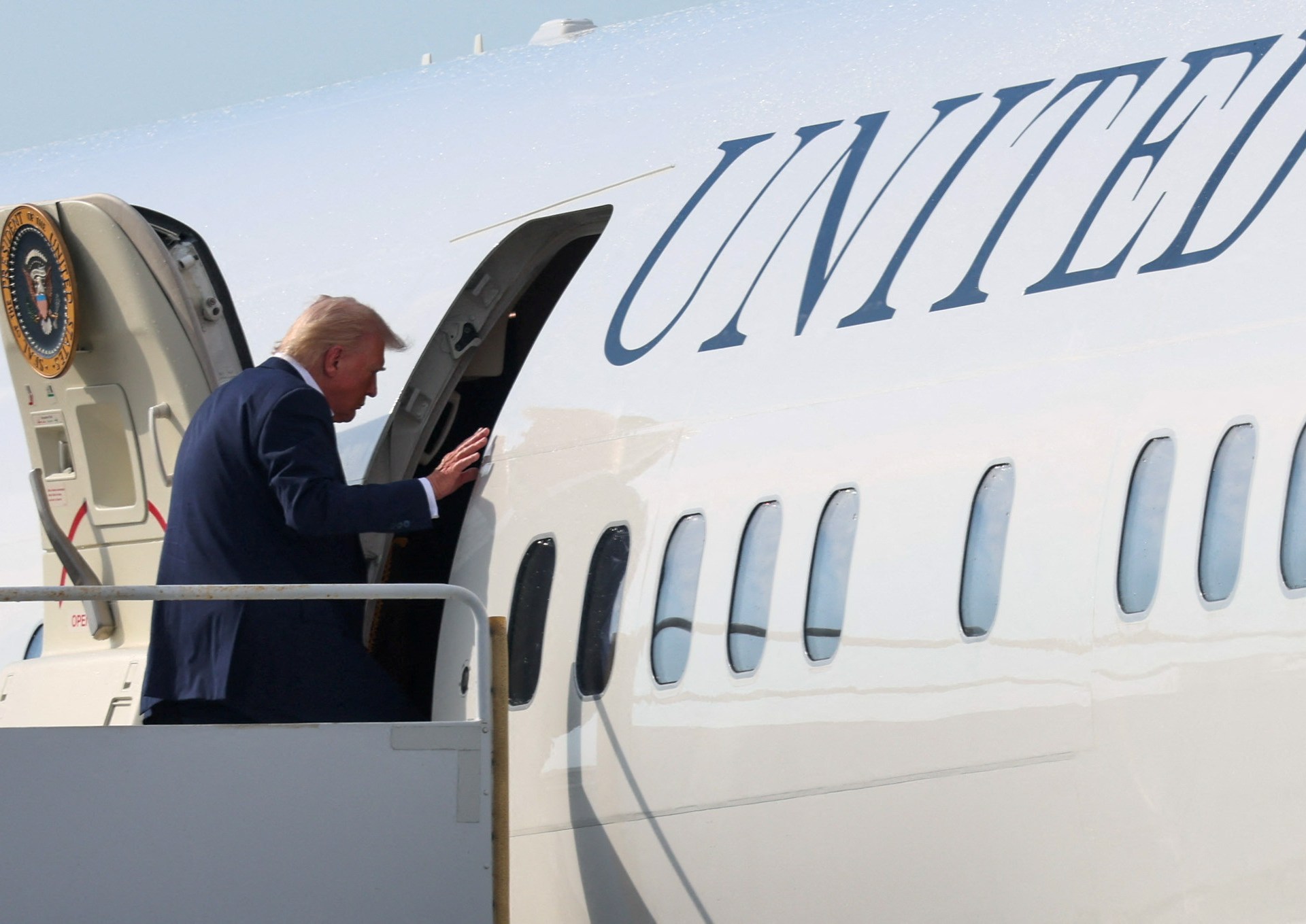WASHINGTON — Defense Secretary Dick Cheney on Monday fired Air Force Chief of Staff Michael J. Dugan, saying that the four-star general displayed “poor judgment at a very sensitive time” by revealing possible targets of air strikes in Iraq in the event of war.
President Bush and Gen. Colin L. Powell, chairman of the Joint Chiefs of Staff, concurred in the dismissal, which came in a 10-minute meeting with Dugan in Cheney’s Pentagon office early Monday.
Dugan was fired for comments published in The Times and Washington Post on Sunday, in which he said that–if war comes–the U.S. military intends to conduct a massive air campaign against Iraq, specifically targeting Iraqi President Saddam Hussein, his family and his palace guard.
“Given the extreme delicacy and sensitivity of the current situation, it’s incumbent upon senior officials to be discreet and tactful in their public statements, and I found those qualities lacking” in Dugan’s remarks, Cheney said in a news conference Monday.
The defense secretary said Dugan’s comments put at risk the lives of the more than 150,000 U.S. troops in the region and jeopardized the five-week-old Persian Gulf operation by revealing classified details of U.S. war planning.
Cheney said he will nominate Gen. Merrill A. McPeak, currently commander of Pacific Air Forces, to be the next chief of staff.
As for Dugan, who had been in the post only since July, Cheney said: “He will be retired.”
The only other member of the Joint Chiefs to have been fired was Adm. Louis E. Denfeld, sacked in October, 1949, by President Harry S. Truman. Denfeld, ironically, had irritated the President and his fellow chiefs for raising questions about the value of air power in modern warfare.
Cheney cited a number of critical sins that Dugan committed in the interviews with three journalists conducted over several hours aboard his aircraft on a trip to Saudi Arabia last week.
“We never talk about future operations, such as the selection of specific targets for potential air strikes. We never talk about the targeting of specific individuals who are officials of other governments. Taking such action might be a violation of the standing presidential executive order” banning assassinations, Cheney said.
He also chastised Dugan for underestimating Iraqi military capabilities, for revealing classified information about the size and disposition of U.S. forces in Saudi Arabia and for demeaning the role of the other U.S. military services by citing air power as the “only option” available for defeating the 1-million-member Iraqi army.
Cheney also was disturbed with Dugan for “treating (U.S.) casualties cavalierly,” an aide said. He apparently was referring to a comment from a senior Dugan aide on the trip who called the expected loss of American lives in such a military operation a “manageable risk.”
Powell reportedly was furious when he saw the Post story on Sunday morning and called Cheney at home at 7 a.m. to point it out. Cheney then sought The Times’ version to see if Dugan’s remarks were accurately reported. The two articles were similar, and the quotations in common were exactly the same. Cheney was “very upset,” but did not make up his mind to fire Dugan until Sunday night, a knowledgeable defense official said.
An aide to Cheney said the defense secretary believes Dugan’s comments “showed egregious judgment” and could not be tolerated. “He became the self-appointed spokesman for (Gen. H. Norman Schwarzkopf, who is directing the U.S. operation in Saudi Arabia) and the chiefs. He revealed classified information. He talked about operational plans that are fundamentally not his choice. He raised sensitive matters of diplomacy relating to other nations. He set a poor standard of military leadership, that a military commander would not take seriously the people we’re up against,” this official said.
“Based on all these things, the secretary just lost confidence in him,” the aide said.
Powell contacted Dugan in Florida and asked if he had been accurately quoted. Dugan assured him that he had been. Powell told him to report to Cheney’s office at 8 a.m. Monday but did not tell the Air Force chief that the decision had been made to dismiss him.
Dugan did not know when he entered Cheney’s Pentagon office that he was about to be fired, an Air Force official said.
In his news conference, Cheney did not dispute the truth of any of Dugan’s assertions, which included a statement that the Joint Chiefs have concluded that the United States would never have sufficient ground forces in Saudi Arabia to drive Iraqi troops out of Kuwait and would therefore be dependent on air power to sway any potential battle.
Dugan also revealed for the first time that the United States has deployed 420 combat aircraft to the Arabian Peninsula–nearly as much striking power as the fleet dedicated to defending Europe against the Soviet Union. Previous estimates of air power in the Persian Gulf region were about half that.
The Air Force chief also disclosed for the first time that the United States had recently purchased advanced Israeli cruise missiles and deployed them aboard B-52 bombers stationed within striking distance of Baghdad. In addition, he said that the Pentagon has consulted with Israeli intelligence agencies to determine the best targets in Iraq.
The most troubling matter, senior Pentagon officials said, was Dugan’s discussion of the possible targeting of Hussein, his family, his inner circle and even his mistress. Cheney suggested that such action “might” violate Executive Order 12333, issued in December, 1981, which specifically prohibits assassinations.
“I think it’s inappropriate . . . for U.S. officials to talk about targeting specific foreign individuals,” Cheney said in the news conference. “I think it is potentially a violation of the standing presidential Executive Order.”
However, the ban on assassinations was modified last year to allow for the killing of senior enemy military commanders as part of a “decapitation” strategy. Hussein is commander in chief of Iraqi military forces–as Bush is commander of all U.S. forces–and thus would be a legal target for military action, Pentagon officials said Monday.
But it clearly would violate U.S. law and policy to target Hussein’s wife, his children or his girlfriend, officials noted.
Cheney, pressed on a variety of Dugan’s assertions, said he could not confirm or deny them without violating the security considerations for which he dismissed Dugan.
The defense secretary also noted that Dugan is “not even in the chain of command,” which runs from Bush to Cheney to Powell to Schwarzkopf, commander of the U.S. Central Command, which covers the Middle East.
Under the current military structure, the members of the Joint Chiefs are advisers to the chairman and provide forces, equipment and support to theater commanders, known inside the Pentagon as the “war-fighting CINCs” or regional commanders in chief.
Cheney praised Dugan’s record of 32 years of Air Force service and said that he regretted firing him. “But under the circumstances, I felt it was necessary,” the secretary said. Dugan’s comments, Cheney noted, “did not in my mind reveal an adequate understanding of the situation and what is expected of him as chief of staff of the Air Force and as a member of the Joint Chiefs.”
The abrupt dismissal undoubtedly will reverberate throughout the Pentagon and the entire U.S. military, which has not enjoyed good relations with the press for two generations.
“You won’t be talking to any generals any time soon,” one senior Army officer told a reporter Monday.
Cheney denied that he was sending a message to military officers to avoid reporters. But he said that he expected his subordinates “to exercise discretion in what they say. . . . That sort of wide-ranging speculation about those matters that were discussed in the interviews that were granted by the general is what I felt was inappropriate.”
Air Force Secretary Donald B. Rice, who had recommended Dugan for the job and who concurred in Cheney’s decision to relieve him, said in a prepared statement: “I regret the circumstances that made it necessary for Secretary of Defense Dick Cheney to take this action. Gen. Dugan is a superb officer. His leadership and innovation will be missed by every man and woman in the Air Force.”
Dugan, 53, jumped over a number of senior Air Force officers when he was chosen for the chief of staff job earlier this year. He is a fighter and attack plane pilot with more than 4,500 flying hours and 300 combat missions in Vietnam.
A graduate of the U.S. Military Academy at West Point, N.Y., Dugan rose rapidly through the Air Force, serving chiefly in fighter squadron commands. His last post before becoming chief of staff in July was as commander of U.S. Air Forces in Europe.
His last Washington assignment was in 1988 and early 1989, when he served as deputy Air Force chief of staff for plans and operations.
Among his decorations are the Distinguished Service Medal, Silver Star, Legion of Merit with two oak leaf clusters, Purple Heart, Distinguished Flying Cross, Air Medal and the Republic of Vietnam Gallantry Cross with Palm.
Dugan has six children, three of them Air Force officers. When the articles appeared Sunday, he was in Florida attending a ceremony for his son Michael’s graduation from F-16 pilot training school.
Sen. John S. McCain (R-Ariz.), a former Navy bomber pilot who was shot down and taken prisoner in Vietnam, said the American system of civilian control of the military dictated Cheney’s firing of Dugan. “I think that clearly Cheney has the authority, and indeed the responsibility, to discipline anyone who violated policy,” he said.
McCain said he was especially troubled by Dugan’s comment that in any bombing campaign “the cutting edge would be in downtown Baghdad. This wouldn’t be a Vietnam-style operation, nibbling around the edges. . . . The way to hurt you is at home, not out in the woods somewhere.”
McCain said he did not think the American public would accept that tactic, even if it were justifiable on purely military grounds.
“His comments are at best not cognizant of the sensitivity of those remarks and the reaction that would be fueled by them,” McCain said. “It’s too bad, because I’m sure the guy was highly qualified for the job. But it comes down to the fact that the civilian leaders have a right to choose whom they want.”
Sens. Sam Nunn (D-Ga.) and John W. Warner (R-Va.), chairman and ranking minority member of the Senate Armed Services Committee, said in a joint statement that they believe Dugan’s firing to be justified.
“The recent public statements attributed to Gen. Dugan were inappropriate,” they said.
THOSE WHO WENT TOO FAR The following is a list of some U.S. military leaders who have been cashiered or disciplined for their comments. GEN. MICHAEL J. DUGAN, Air Force chief of staff
Fired on Sept. 17, 1990
By: Defense Secretary Dick Cheney
For: Publicly discussing possible targets of U.S. air strikes in Iraq if President Bush ordered use of military force against Saddam Hussein.
MAJ. GEN. JOHN K. SINGLAUB, U.S. chief of staff in South Korea
Fired May 21, 1977
By: President Jimmy Carter
For: Publicly opposing Carter’s plan to withdraw U.S. ground forces from Korea. He contended that the move would lead to war.
GEN. DOUGLAS MacARTHUR, Commander, U.S. , U.N. forces in Korean War
Fired on April 11, 1951
By: President Harry S. Truman
For: Making public his disagreement with Truman over methods to win the war, including his desire to bomb supply centers in Manchuria.
ADM. LOUIS E. DENFELD, Chief of naval operations
Fired in October, 1949
By: President Harry S. Truman
For: Speaking out on Capitol Hill against Navy budget cuts and questioning the value of air power.
GEN. WINFIELD SCOTT, General in chief, U.S. Army
Suspended for a year in 1810
By: Court-martial
For: Calling his superior officer, Gen. James Wilkinson, as great a traitor as Aaron Burr.
(Southland Edition) THOSE WHO WENT TOO FAR . . . OR NOT FAR ENOUGH
The following is a list of some U.S. military leaders who have been cashiered or disciplined for their actions or comments. ADM. HUSBAND E. KIMMEL Commander in chief, Pacific Fleet
Retired in 1942 after being accused of dereliction of duty
By: Naval board of inquiry
For: Poor state of readiness of naval forces; poor response to Japan attack on Pearl Harbor.
GEN. JOSEPH HOOKER Commander, Union Army
Relieved of command in April, 1863
By: President Abraham Lincoln
For: Indecisiveness at the battle of Chancellorsville which allowed Confederates to mount surprise attack.
GEN. AMBROSE E. BURNSIDE Commander, Army of the Potomac
Relieved of command in December, 1862.
By: President Lincoln
For: Ordering his forces on Dec. 13, 1862, to make suicidal assault on entrenched
Confederate positions in Fredericksburg, Va., and sustaining 12,600 casualties.
GEN. GEORGE B. McCLELLAN Commander, Union Army
Fired on Nov. 7, 1862
By: President Lincoln
For: Procrastination and failure to capitalize on military opportunities, including allowing Confederates to hold the line at the Battle of Antietam on Sept. 17.
BRIG. GEN. JOHN POPE Union Army
Fired on Sept. 5, 1862
By: President Abraham Lincoln
For: Leading Union forces to defeat at the Second Bull Run battle in August.
DUGAN WAS WARNED: Cheney aides told the general to steer clear of the press. A10
WHITE HOUSE CONCERN: Officials are said to feel the military was too candid. A12



